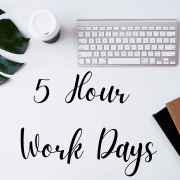 Shocking number of people work while ill; stress at work rises. A new report carried out by the Chartered Institute of Personnel and Development (CIPD) was released today, just in time for Mental Health Awareness Month. The statistics are shocking.
Shocking number of people work while ill; stress at work rises. A new report carried out by the Chartered Institute of Personnel and Development (CIPD) was released today, just in time for Mental Health Awareness Month. The statistics are shocking.
People working while ill has tripled since 2010
The Health and Wellbeing at Work Survey was carried out at the beginning of 2018. Respondents to the survey said they had they had observed presenteeism (people working while ill) in their organisation over the last 12 months, compared with 72% in 2016 and just 26% in 2010. This is their 18th Survey, so there is now a wealth of data to compare with.
Fewer Companies are Challenging “Presenteeism” and “Leavism” than in 2016
Even despite these shocking figures, only a very small number of firms are taking steps to tackle the issue. In fact 50% fewer companies are taking steps to tackle the issue in 2018 than in 2016.
As well as “Presenteeism” being a problem, the new buzzword is “Leaveism”. This is when people use their annual leave to work. This is also highlighted in the report with only 27% of companies that see this behaviour, doing something to discourage it.
Working while ill bad for the individual
Shocking number of people work while ill; stress at work rises. Neither Presenteeism nor Leaveism is good for the individual or the company. Everyone needs downtime and some R&R. If staff are using their annual leave to get work done that is bad news.
Work is more pressured than ever and so many people are worried about job security. They show up because they want to be seen and want to give no reason to be first in line for redundancy. In the longer term this can lead to more serious illness and a lot longer on sick leave.
Bad for Business
As well as impacting the wellbeing of the individual, it will also have a disastrous result for your company productivity. People who are struggling are not working at their best or fullest capacity. In fact, they are probably operating well below par. The longer this goes on the less productive they will be.
What Can You Do About It?
There is a direct link between presenteeism/leaveism and increases in stress-related absence and other mental health related illnesses like depression and anxiety. These are still among the top causes of long-term sickness absence.
If you recognise this behaviour in your company, that people are working when ill in particular, then a focus on employee wellbeing as a whole can reduce unhealthy workplace practices.
Senior leaders are key influencers and must support wellbeing. They also need to act as role models within the company. Managers within the company, at all levels, need the training to support employees and often themselves.
“In order to tackle these unhealthy practices within your company, it is vitally important that you invest in a health and wellbeing strategy, and that the strategy is at the core of your values. I am in no doubt that if you do invest in a health and wellbeing strategy you will absolutely see the benefits.” Pam Whelan, Director of Corporate, Simply Health
I will be taking a deeper dive into different aspects of the report in future blogs.
Need Help?
If you need support in implementing your wellbeing strategy or changing behaviour in your company, or perhaps you are interested in finding out more about how to support your employees then I would love to connect.
Here’s my calendar link to make finding time easy.











